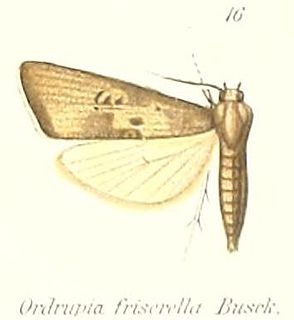
Copromorphidae, the "tropical fruitworm moths" is a family of insects in the lepidopteran order. These moths have broad, rounded forewings, and well-camouflaged scale patterns. Unlike Carposinidae the mouthparts include "labial palps" with the second rather than third segment the longest. With other unusual structural characteristics of the caterpillar and adult, it could represent the sister lineage of all other extant members of this superfamily. The genus Sisyroxena from Madagascar is also notable for its unusual venation and wing scale sockets.
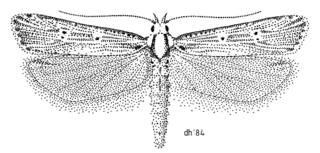
Anisoplaca is a genus of moth in the family Gelechiidae.

Sabatinca is a genus of small primitive metallic moths in the family Micropterigidae. Palaeomicra and Micropardalis were both established as subgenera of Sabatinca, but were both raised to generic level by Joël Minet in 1985. Extinct species are known from the Cretaceous Burmese amber.
Heterocrossa cryodana is a species of moth in the family Carposinidae. It is endemic to New Zealand.
Heterocrossa epomiana is a species moth in the family Carposinidae. It is endemic to New Zealand.

Circoxena ditrocha is a species of moth in the family Blastodacnidae. This species is endemic to New Zealand. It is classified as "At Risk, Naturally Uncommon" by the Department of Conservation.

Phaeosaces compsotypa is a species of moth. It is endemic to New Zealand. The species has been known as Cryptolechia compsotypa until Phaeosaces was reinstated as a valid genus by John S. Dugdale in 1988.

Dioxycanus fusca is a species of moth of the family Hepialidae. It is endemic to New Zealand. This species was first described by Alfred Philpott in 1914 as Porina fusca using specimens collected by C. Fenwick and M. O. Pasco. In 1966 L. J. Dumbleton reviewed New Zealand Hepialinae and placed this species within the genus Dioxycanus, giving it the new combination Dioxycanus fuscus.
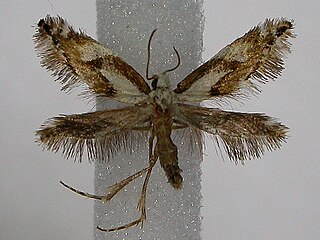
Mnesarchaea acuta is a species of primitive moths in the family Mnesarchaeidae. It was described by Alfred Philpott in 1929, and is endemic to New Zealand.
Mnesarchaea fusca is a species of primitive moths in the family Mnesarchaeidae. It was described by Philpott in 1922, and is endemic to New Zealand.

Mnesarchaea loxoscia is a species of primitive moths in the family Mnesarchaeidae. It was described by Edward Meyrick in 1888, and is endemic to New Zealand.
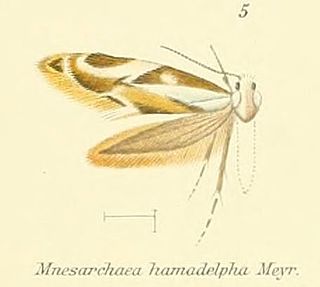
Mnesarchaea hamadelpha is a species of primitive moths in the family Mnesarchaeidae. It was described by Edward Meyrick in 1888, and is endemic to New Zealand.
Mnesarchaea paracosma is a species of primitive moths in the family Mnesarchaeidae. It is endemic to New Zealand.
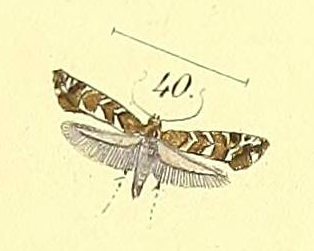
Glyphipterix tungella is a species of sedge moth in the genus Glyphipterix. It is endemic to New Zealand.

Heterocrossa is a genus of moths in the Carposinidae family. It is endemic to New Zealand. This genus was previously regarded as a synonym of the genus Carposina. However Elwood C. Zimmerman in Insects of Hawaii removed Heterocrossa from synonymy with Carposina. Zimmerman argued that as the genitalia of Heterocrossa and Carposina are distinct, Heterocrossa should not be regarded as a synonym of Carposina. This was agreed with by John S. Dugdale in his annotated catalogue of New Zealand lepidoptera.

Anisoplaca ptyoptera is a species of moth in the family Gelechiidae. It was described by Edward Meyrick in 1885. It is found in New Zealand.

Phaeosaces is a genus of moths belonging to the family Depressariidae, endemic to New Zealand. It has been considered to be a synonym of Cryptolechia until reinstated as a valid genus by John S. Dugdale (1988).

Tinea belonota is a species of moth in the family Tineidae. It is endemic to New Zealand. It is classified as not threatened by the Department of Conservation.

Asaphodes imperfecta is a moth in the family Geometridae. It is endemic to New Zealand. It is classified as critically endangered by the Department of Conservation.
Tingena loxotis is a species of moth in the family Oecophoridae. This species is endemic to New Zealand. It is classified as "Data Deficient" by the Department of Conservation.













